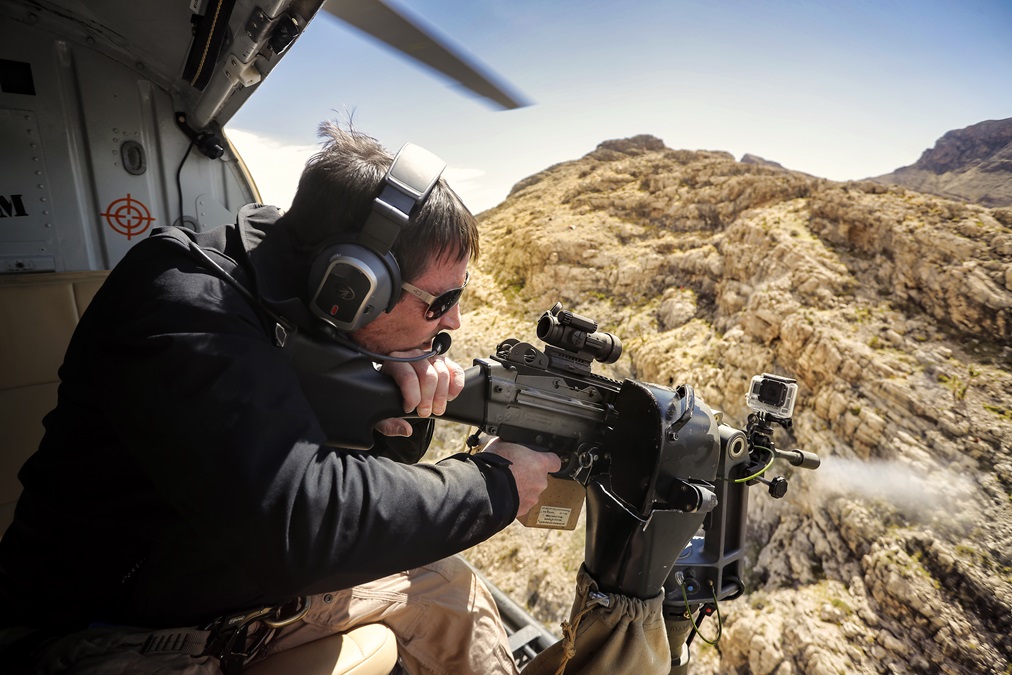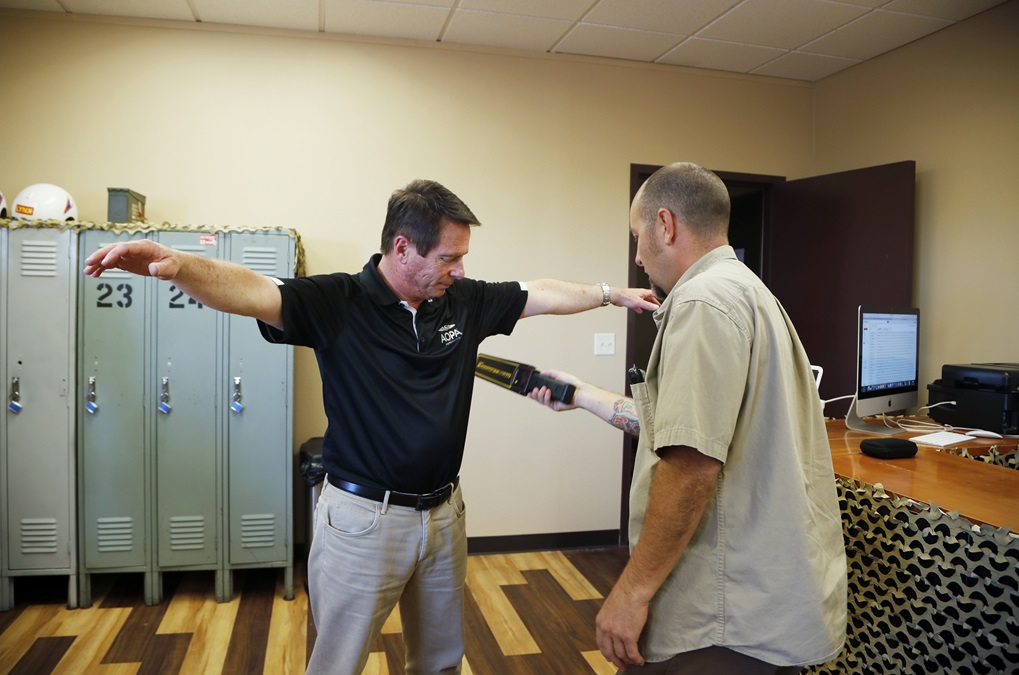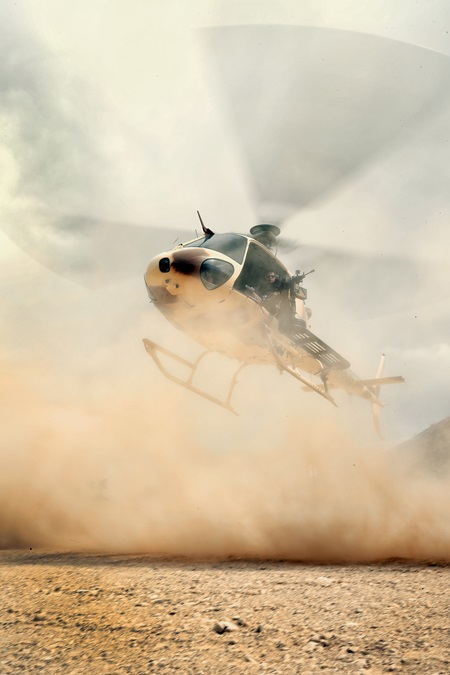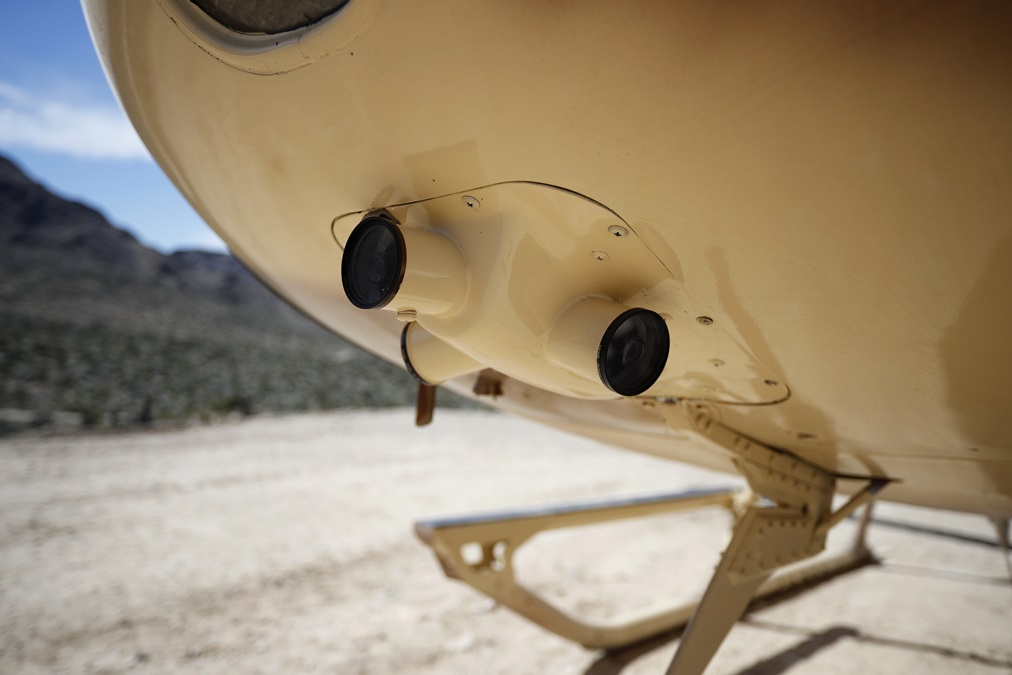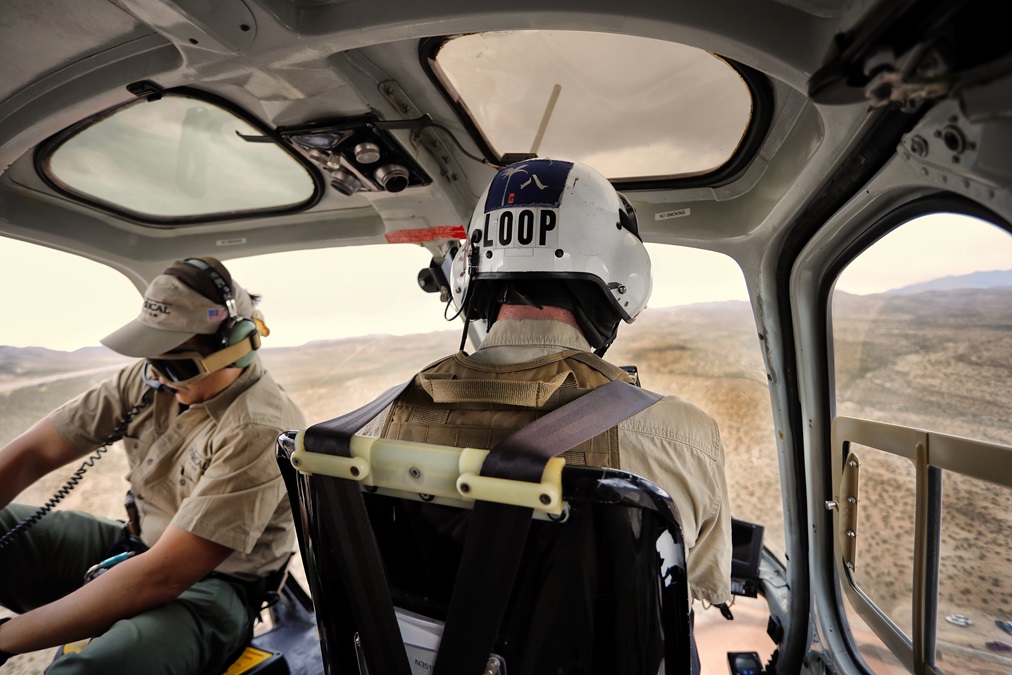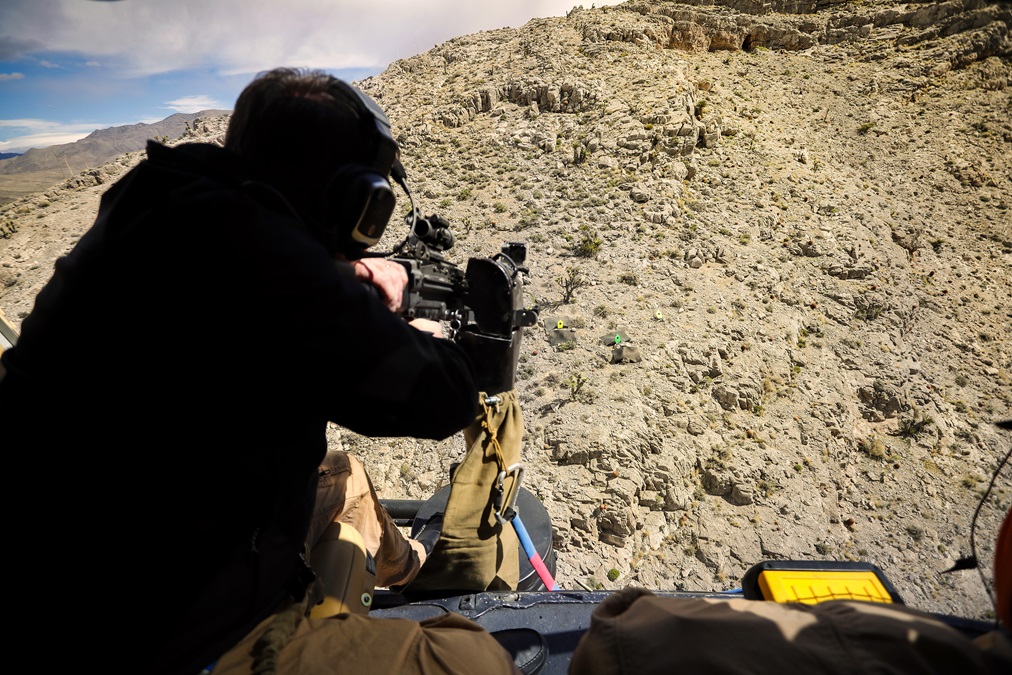Getting the lead out
Door-gunner experience puts a new twist on helicopter flights
Sitting on the edge of the helicopter door where the smell of turbine exhaust mixes with the essence of gun powder, the stock of the belt-fed squad semi-automatic weapon is pressed against my cheek. I lean into the wind and rotor blast, scouting the next target as we move along the ridgeline—this helicopter door gunner flight is an all-sensory experience like I’ve never known before.
And that’s just what Machine Gun Helicopters is hoping for—a breakthrough aviation experience for tourists jaded by zip lines and racing exotic cars on a track. And while pilots will surely be among those looking for a unique helicopter flight, Machine Gun Helicopters founder Robert Fahnestock, himself a general aviation pilot, FBO owner, and AOPA member, knows that fellow aviators will be the first to wonder about the safety of all this—both aircraft safety and firearm safety.
“Our number-one priority here is safety. And our number-two and three priorities are safety,” Fahnestock declared. Indeed, the company does seem to have covered all the bases. The flights operate under Part 135 of the federal aviation regulations, stringent guidelines that cover everything from the required skillsets of key staff members and the type of aircraft involved to maintenance intervals and security protocols—all designed to assure that paying passengers have a safe experience. However, Part 135 regs typically are intended for aircraft moving passengers from one point to another. Those writing the regs never contemplated strapping an automatic weapon to the side of a helicopter and skimming a desert ridgeline.
The FAA has been surprisingly cooperative once Fahnestock acquired a Part 135 certificate from an Arizona company, although moving the certificate to a Nevada-based company did present some paperwork challenges. With that complete, Fahnestock and his team of co-founders set out to modify the Airbus AStar helicopter with a skid-mounted rack and gun mount. The custom-designed mount took months to develop and get approved. It has mechanical stops that prevent the barrel of the guns from moving up or down enough for a bullet to hit the main rotor or skid. Similarly, left and right movement is also restricted to protect the rest of the helicopter and those inside.
Passengers pass through multiple levels of screening before they are escorted to the helicopter. First up is a blood alcohol level screening; any hint of alcohol grounds the participant. After recording weight and watching a video, the guests secure their personal items in lockers and then undergo wanding for metal items—the goal is that no one brings any weapons onto the helicopter. Once donning flight suits and completing a safety briefing, guests—up to three at a time—are under constant surveillance until they board the helicopter.
There, the on-board range safety officer helps them attach tethers to waist harnesses. The tethers allow passengers to unbuckle seatbelts after takeoff and to rotate safely to the firing position during flight. Passengers have no contact with the firearm until over the 71-acre mining valley Machine Gun Helicopters leases as its shooting range. The valley is dotted with abandoned copper and palladium mines.
Once into the remote valley, the pilot commences a series of low passes while sounding a siren and making external announcements that firing is about to begin. Then, the fun starts, as the pilot positions the helicopter alongside the first red or green steel target mounted near the top of a ridgeline. Flying at about 1,000 feet agl, the pilot progresses along the ridgeline, the shooter scanning for the next target and spinning the weapon to track it. A red dot sight in the scope helps shooters improve their aim, but it’s still challenging to hit the small targets while flying. As the shooter’s accuracy improves, the pilot can change the speed and altitude to increase the challenge.
Lightspeed wireless noise-canceling headsets ease communication with the pilot and range officer, and allow those waiting their turn to trash-talk the shooter. Even though this is Vegas, what happens on the helicopter doesn’t stay on the helicopter. The ship is equipped with multiple internal and external cameras, the pilot selecting various angles to assure an easily edited souvenir video once on the ground. Thundering ’60s rock and roll pumped through the intercom enhances the door-gunner-for-a-day experience. Every Vietnam War movie you’ve ever seen plays out in your mind as the desert unfolds beneath you.
The company began operations in early 2017, after more than a year of preparation. Fahnestock founded the helicopter gunship business with his son Matt, experienced helicopter pilot Solomon Loop, and longtime FBO manager Randy Saenz. Saenz and Robert Fahnestock have worked together for years in Fahnestock’s helicopter parts, maintenance, and modification company, which he sold two years ago to another partner, and the BFE Flight Services FBO at Nevada’s Boulder City Airport. The entrepreneur still owns the FBO.
After selling his helicopter parts business, the elder Fahnestock thought life would slow down, but when Matt graduated from college and expressed an interest in an aviation business, the two set out on an adventure, bringing the partners along. Matt recently passed his commercial rotorcraft checkride, joining his father and Loop as pilots in the gunship operation. “For my son, just getting into this business, it has been an excellent education for him. And for me as a father, that’s why I’m doing it. I get to work with my kid—we get to fly helicopters and shoot guns.”
Matt acknowledges his father’s long career in the aviation industry and relies on his advice. “I can always come to him with questions. It’s a great experience. It’s a lot of fun,” he said.
The younger entrepreneur has big plans for the future. “I’d definitely like to expand. Maybe get bigger helicopters, bigger weapons, have larger things to shoot at.” The company has options to improve the mining valley as well, perhaps building a sniper village where shooters on the ground can experience simulated door-to-door combat. The layout of the valley also permits long-range shooting experiences with sniper weapons, all while other guests are safely shooting nearby from the helicopter. All of that may be happening sooner than originally anticipated because of a recent change in trajectory for the new company.
In May, a few weeks after the visit by AOPA Pilot, the team partnered with Machine Guns Vegas, an established gun range with licensing to operate fully automatic weapons and already offering a host of other firearm-related activities and courses. Machine Guns Vegas is owned by Genghis Cohen, also a helicopter pilot. The change means the semi-automatic M249S will be swapped out for the fully automatic SAW and an M60, a .308 caliber fully automatic rifle.
The AStar and a Robinson R44, equipped with a shoulder mount, will be operating from new helipads being built next to the gun range, located southwest of the Vegas strip. Transportation will be provided from numerous area airports and other locations around Vegas. Packages can also include shooting at the outdoor range with access to a variety of firearms, such as a .50 caliber gun and, as Fahnestock hinted, maybe the chance to blow up a car. The Pioneer Saloon, made famous in many western movies, is nearby, which makes for a convenient watering hole stop after shooting.
Fahnestock said the 10-minute helicopter experience can range from about $350 to $500 depending on the guest’s departure point, the helicopter involved, and the amount of ammo desired. The base package includes 60 rounds. Fahnestock says a flash of your AOPA membership card will earn you an extra 10 rounds. The AStar can easily accommodate up to three shooters; two in the Robinson. Good shooting.
Email t[email protected]

